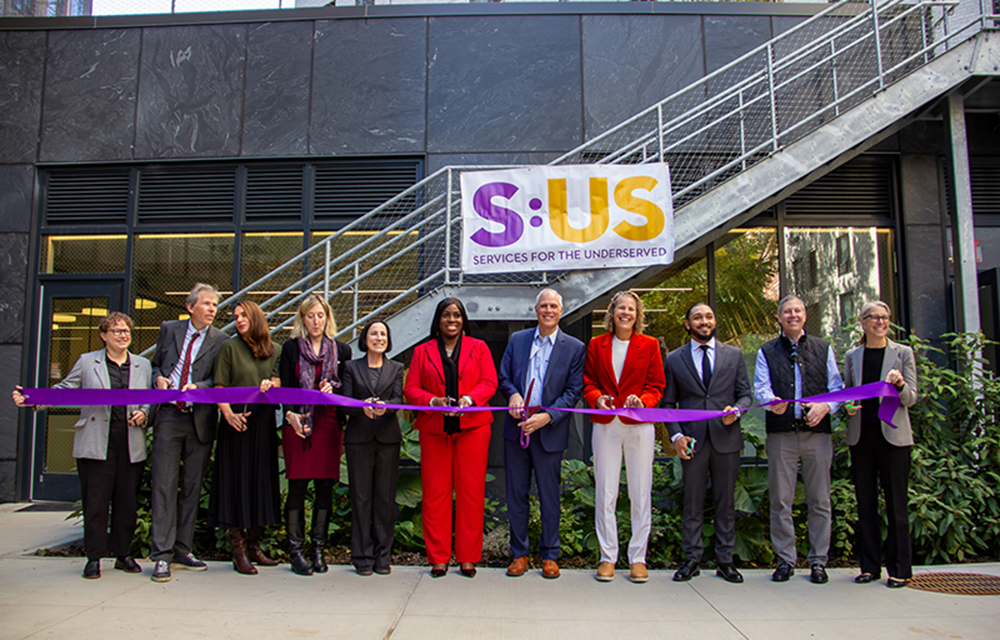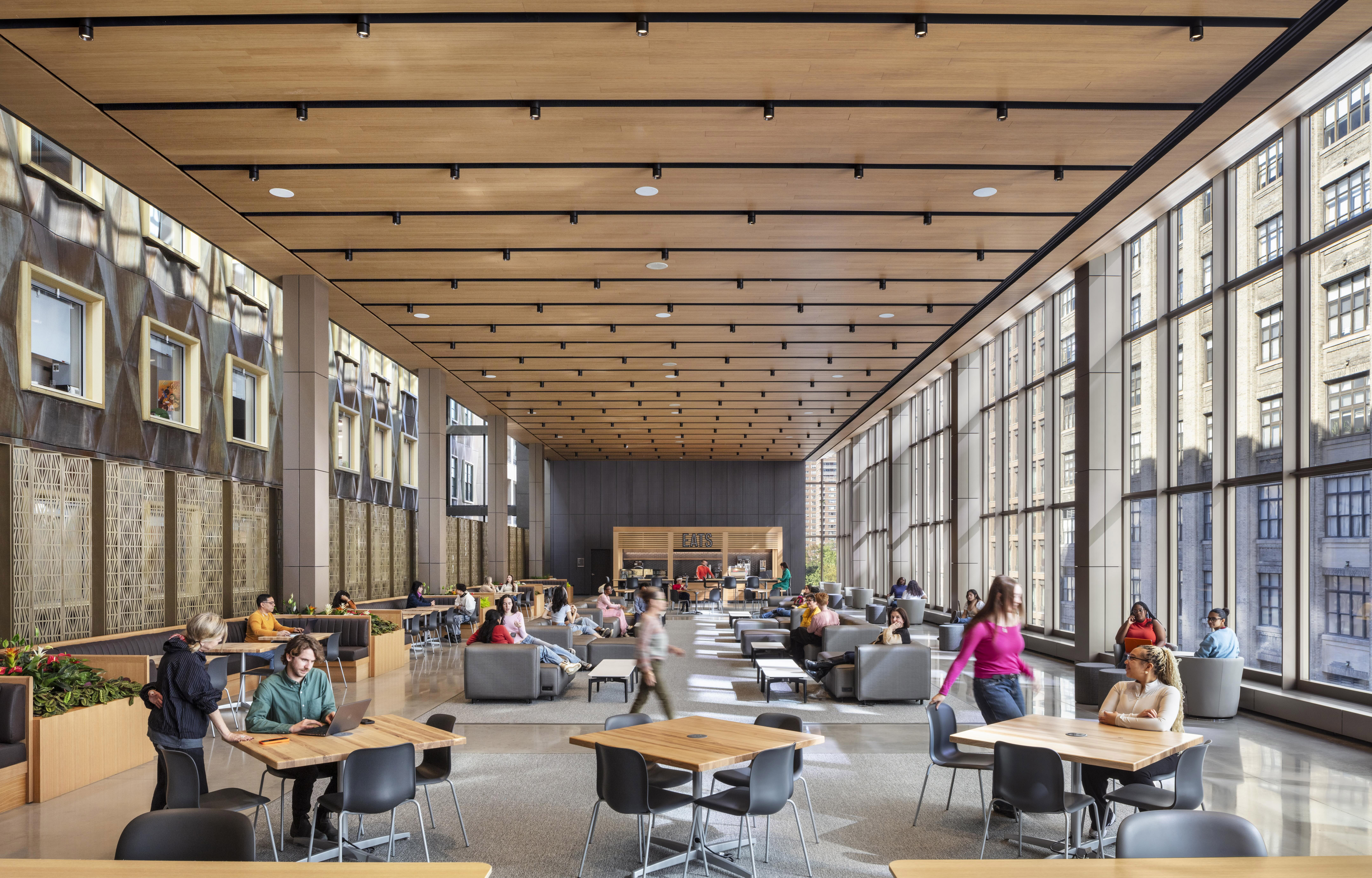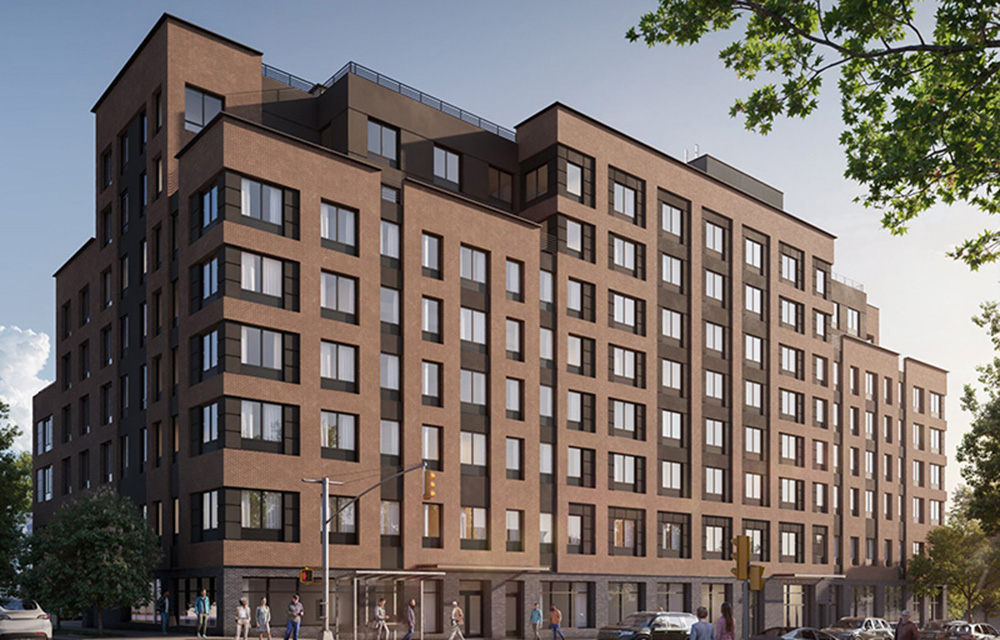News:
Construction Design & Engineering
Posted: December 9, 2014
Stalco Construction, LiRo Group, H3 Hardy and Battery Park City Authority win ENR New York Best of 2014 Award
General contractor Stalco Construction, construction manager The LiRo Group, H3 Hardy Collaboration Architecture, and Battery Park City Authority (BPCA)received the ENR New York Best of 2014 Award in the Restoration/Renovation Category for the restoration and renovation of the landmark Pier A in Battery Park.
Shari Hyman, president & COO of the BPCA, said, "Receiving the ENR New York Best of 2014 Award for Pier A is a source of great pride for the Battery Park City Authority. The restoration of Pier A stands as a testament to the collaboration between BPCA's remarkable staff working with an outstanding group of professionals from H3 Hardy Collaboration, Stalco Construction, and The LiRo Group. Our collective commitment to the history and architecture of this landmarked building, while bringing it up to modern standards for reuse, are apparent from the moment you see the building."
The three-story historic Victorian building is on its way to becoming a destination once again. In its heyday, the 36,000 s/f Pier A welcomed celebrities and heads of state until it fell into disrepair, even being marked for demolition during the construction of Battery Park City. Instead, this structure - begun in 1886 and finished off with the nation's first World War I memorial in 1919 - was designated a historic landmark in 1975.
As general contractor, Stalco completely renovated the interior, restored the exterior and roof, performed extensive structural repairs, and installed new concrete slabs and access ramps on the pier's promenade, in anticipation of Pier A being turned over to the Poulakakos family, who will in turn build out restaurants, a catering hall, and a tourist information center.
The Hugh L. Carey Battery Park City Authority is developing the project according to the organization's guidelines for environmentally responsible development. The City of New York Economic Development Corporation provided the funding. The project is on track to receive a Silver LEED certification.
History Behind Pier A
Pier A, with its spectacular New York Harbor views, was built in 1886 on granite piers by the New York City Department of Docks for itself and the New York Harbor Police and later served as an FDNY fireboat station and workshop. It is the oldest remaining pier structure in the city. The building as it is known today is actually the product three phases over 33 years. The initial structure, the pier shed, was built in 1886 of timber primarily with masonry, iron, and steel, with the piers below the deck constructed of masonry and concrete systems. The third-story addition was built in 1904, at which time the entire structure was clad in metal. The clock tower installation and memorial were added in 1919. In 1964 the FDNY removed the metal cladding.
Pier A was listed on the National Register of Historic Places in 1975, became a New York City Landmark in 1977, and was entered into the Historic American Engineering Record in 1983. Various attempts to renovate Pier A have been abandoned, the most recent of which was in 2000, after which the building was left unprotected against the elements until the successful $15 million Stalco renovation, which was begun in 2011.
In 2008, H3 Hardy Collaboration Architecture performed a reuse study that looked at various tenants including the Staten Island Ferry and the National Park Service. It subsequently developed a phasing plan for renovation and reuse that was implemented by Stalco. For the first time in history, the building will be used by the general public.
Restoration and Renovation
Stalco and LiRo renovated the core and shell, renovated and reinforced the supporting pier, and restored and renovated the historic interior, then passed it along to the restaurant fit-out team. H3 were the architects of the project and historic renovation plan.
According to Stalco Principal Kevin G. Harney, "The pier house is supported by a concrete and iron pier deck structure built using concrete arches spanning between iron girders constructed of plates and angles connected with rivets. The team installed three new long thin post-tensioned concrete girders placed alongside the length of the pier connected to the nine-inch granite pier-support arches. The new girders support and became part of the first floor of the renovated building, allowing the building structure to be left in place mostly undisturbed."
Much research was done by H3 Hardy Collaboration and the engineering team using historic photographs and texts, site tests, and probing of materials and structural elements. Plaster elements were renovated or replicated including column capitals, decorative scrollwork, brackets, keystones, cladding, window trims, and balusters. The exterior wall system featured metal panels and the roof is made of copper, all of which had to be refurbished or replicated and replaced. The decorative metal details of elements such as cornices and paneling were highly detailed. Restoring it required replacing parts of the original detailed metal façade and fixtures that are no longer produced in this country. Once the metal work was complete, it all got a saltwater-resistant coating since every high tide brings saltwater into the Hudson.
The team reinforced the iron columns supporting the second floor and installed larger wooden beams underneath the second floor, providing a more open span on the first floor where the restaurant will be. Installing these larger beams allowed the team to remove two rows of columns, further opening up the space. Other structural work included reinforcements for the third floor and attic utility systems.
The floor-to-ceiling arched windows were replicated in mahogany, copying the original window design but using low-e, double-pane thermal glass which are very energy-efficient.
The WWI memorial clock was cleaned, but the gears of the clock needed to be completely recast. The team also saved a plaque on the breakwater commemorating marine firemen, which had been installed in the 1970s.
Since many of the building's structural elements could not be revised, the team used a Revit BIM software to design the layout of the piping and building systems to avoid conflicts. The MEP engineer was J.M. Armstrong DSM.
"Both the design and construction focused on sustainable practices," said H3 Hardy Collaboration Partner John Fontillas, AIA, LEED AP. "The team reused as many free-standing historical elements as possible, including wooden stair railings, iron structural brackets, doors and door hardware, and ornamental sheeting. Materials left behind from failed attempts to renovate were also used when possible. Windows were replaced with highly energy-efficient low-e, double-pane thermal glass," he added.
One of the most interesting technical solutions implemented during the renovation was an energy efficient underwater cooling system. A Keel cooler array system was used to take excess heat from the mechanical system and transfer it to submerged heat-exchange fins that dissipate it into the Hudson River. Such systems are generally used on boats; this is the first time it is being used in a standalone building. Stalco constructed the cage and piles supporting the submerged unit, which cools in part using river water.
Pier A's Design and Construction Challenges
According to Stalco Vice President Joseph M. Serpe, "The preconstruction investigations could not uncover every potential issue and condition. Certain structural issues, for example, were uncovered and had to be addressed quickly as they arose. These included timber rot, where entire sections had to be replaced. In addition, the bottom flanges of the existing pier deck girders were severely corroded and the concrete forming the arches between the girders was cracked."
Three sides of the structure are surrounded by water and the fourth land-locked side is a busy pedestrian area, so great care was taken to access the site. In some portions of the work on the pier structure itself and for work on the underwater systems, divers, cranes on barges, and floating cranes were used, as land access was impossible.
A design issue arose with the mechanical equipment. The team could not install roof units due both to the pitch of the roof and its historical significance. Nor was there any space outside the building. The team instead used attic space to install part of the equipment. It has the added benefit of being above the flood-plane level, protecting it from future natural disasters such as flooding.
Due to its various historic designations and multiple parties involved, work had to be reviewed by myriad agencies including the New York State Historic Preservation Office, the New York City Landmarks Commission, the Department of Environmental Protection, the New York fire department, local utilities, New York City Department of Buildings, New York City Small Business Services Administration (which handles waterfront development), New York City Economic Development Corporation, New York State Department of State (which has jurisdiction over waterfront property), and, in the initial phase, the U.S. National Park Service (as a possible tenant).
Much restoration of certain interior finishes involved work with the original anaglypta wainscoting; this had to be renovated and, where severely damaged, it had to be replicated. This was also true of the metal cladding and plasterwork throughout. In some instances, Stalco turned to European artisans to create the new materials.
Construction was nearly complete in late 2012 when Hurricane Sandy hit. Stalco helped secure the building for the impending storm, incorporating research and advice from engineers. Based on their actions, no windows were damaged. Structural systems were undamaged and building systems remained safe save for minor electrical damage. The mechanical system was above the flood plain level, so it was unharmed. However, at its highest point, surging Sandy waters were 40 inches above the ground floor level, so water did breach the first floor. Stalco spent another six months fixing the hurricane's damage, which included new drywall and other interior finishes.
The structure is currently undergoing additional construction work in preparation for a restaurant and catering tenant.
Stalco Construction, Inc.
Based in Manhattan and Islandia, NY, Stalco Construction, Inc. is a full-service general contracting and construction management firm active in the Greater New York area and on Long Island. Building Design & Construction magazine ranks Stalco as the 62nd largest construction manager and the 101st largest general contractor in the United States. ENR New York magazine ranked Stalco as the 52nd largest contractor in the NY/NJ/CT Tri-state area in 2014.
Established in 1992, the firm builds commercial and institutional facilities for office, retail, educational, healthcare, governmental, entertainment, sports and worship clients. Stalco's personnel include professional engineers, architects, project managers, superintendents, and support staff. The value of the firm's on-going ground-up, interior, and capital improvement projects exceeds $100 million.
Stalco's affiliate, Stalco International Group, designs and erects custom engineered buildings for developers and architects of commercial, office, institutional, public, and industrial structures. Stalco works in a partnership with Varco Pruden Buildings, a division of BlueScope Buildings North America, a world leader of the pre-engineered buildings industry.
Since the firm's inception, its leadership and employees have been involved in supporting the local community through responsible corporate citizenship and charity work. The company's principals, Kevin G. Harney and Alan Nahmias, co-founded Contractors For Kids (CFK), a not-for-profit organization supported by nearly 300 Long Island-based construction and real estate organizations. CFK provides assistance to children and their families impacted by health-related crisis.
Stalco's current and recent work includes the $8.4-million Battery Park City Community Center and the $15-million restoration of the landmark Pier A in Manhattan; the $24-million renovation of the Vaughn College of Aeronautics and Technology in Queens, NY; the new, $24-million Emergency Department at the Lincoln Medical and Mental Health Center in the Bronx; the $16.5-million renovation and expansion of the Long Beach High School in Lido Beach, NY; the $1.4-million Home Fair store at the Atlas Park Mall in Queens NY; the Ultra Diamonds jewelry store in Riverhead, NY; the $11.3-million renovation of the landmarked Erasmus Hall High School in Brooklyn, NY; the on-call Construction Management contract for the 780,000-square foot CA, Inc. Global Headquarters in Islandia, NY; and the $30-million expansion and renovation program for the Three Village Central School District in Suffolk County.
***
Suggested photo captions and credits:
ENR Best of 2014 Stalco Pier LiRo Pier A Award med.jpg
Battery Park City Authority, Stalco Construction, The LiRo Group, and H3 Hardy Collaboration Architecture received the ENR New York Best of 2014 Award in the Renovation/Restoration category for the restoration of the landmark Pier A in Manhattan's Battery Park area. Left to right, standing: Stalco Director of Field Operations James J. Schuchman, The Liro Group Manager Jaio H. Maraj, BPCA President & COO Shari C. Hyman, Stalco Principal Kevin G. Harney, and The LiRo Group Vice President Frank Franco. Left to right, seated: Stalco Project Manager Michael Finnerty, Stalco Vice President AnaTracey Hawkins, Stalco Vice President Joseph M. Serpe, and Weidlinger Associates Associate Michael Astrella.
Photo by Peter Wilk/Wilk Marketing Communications
Pier A 542 med.jpg
Stalco Construction completely renovated the Pier A's interior, restored the exterior and roof, performed extensive structural repairs, and installed new concrete slabs and access ramps on the pier's promenade.
Photo by Ola Wilk/Wilk Marketing Communications
Pier A 0201 boardroom med.jpg
The restored, millwork-clad executive office of Pier A will house a bar.
Photo by Eduard Hueber/archphoto
Pier A 0203 upstairs np med.jpg
The design and construction team of H3 Hardy Collaboration and Stalco restored and reused as many historical interior elements as possible, including wooden stair railings, millwork, and doors and door hardware.
Photo by Eduard Hueber/archphoto
Pier A 533 med.jpg
Stalco replicated the Pier A's floor-to-ceiling arched windows in mahogany, copying the original window design, but using low-e, double-pane thermal glass which are very energy-efficient.
Photo by Ola Wilk/Wilk Marketing Communications
MORE FROM Construction Design & Engineering
Troutbrook expands with boutique condo project and Marriott Fairfield Inn & Suites renovation
Brooklyn, NY For more than 25 years, Troutbrook/Freud Development has remained focused on executing design-driven projects across the city. Its latest ventures reflect both a continued push into boutique residential development and an expansion

Quick Hits







.gif)
.jpg)
.gif)
.gif)